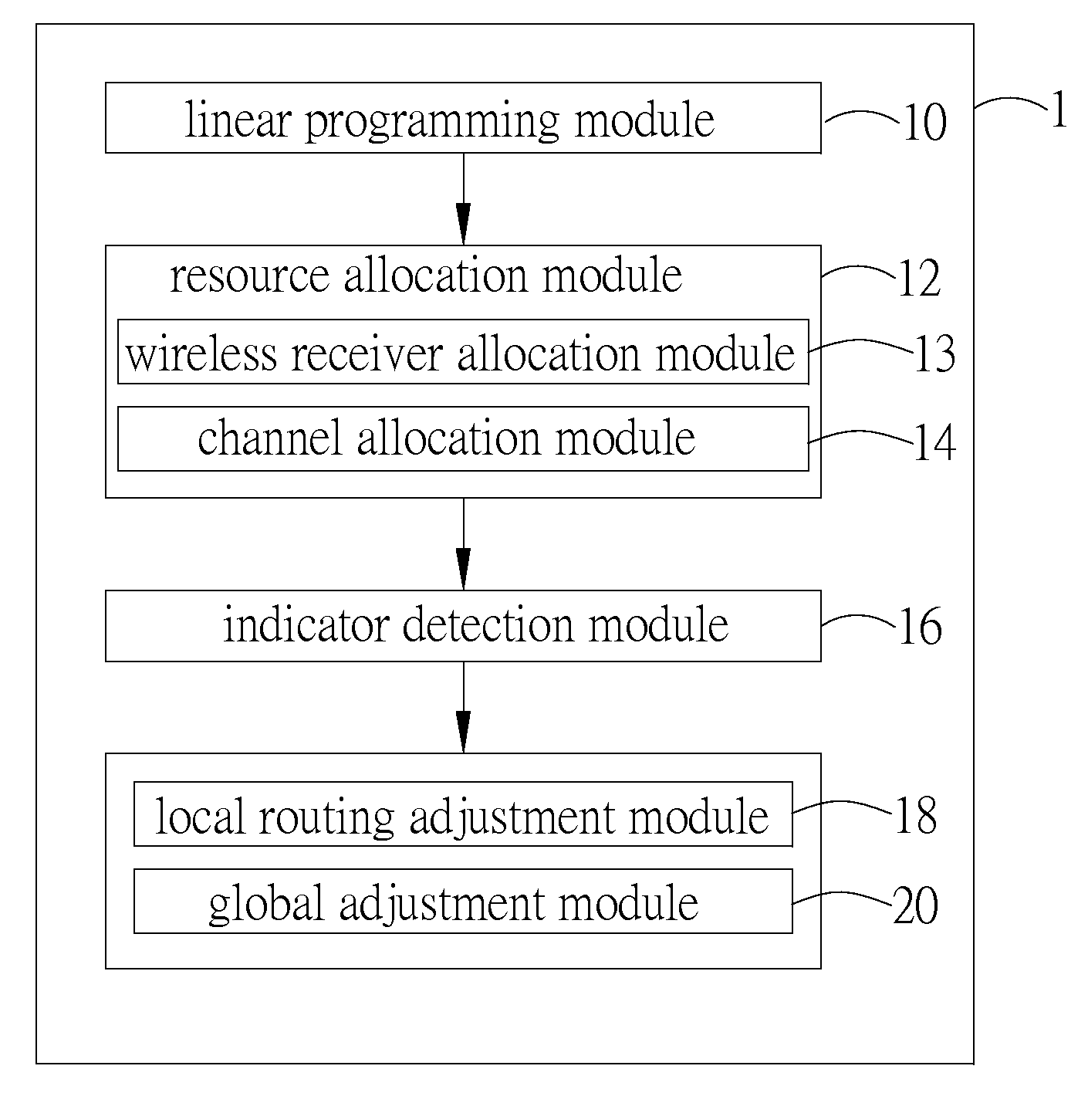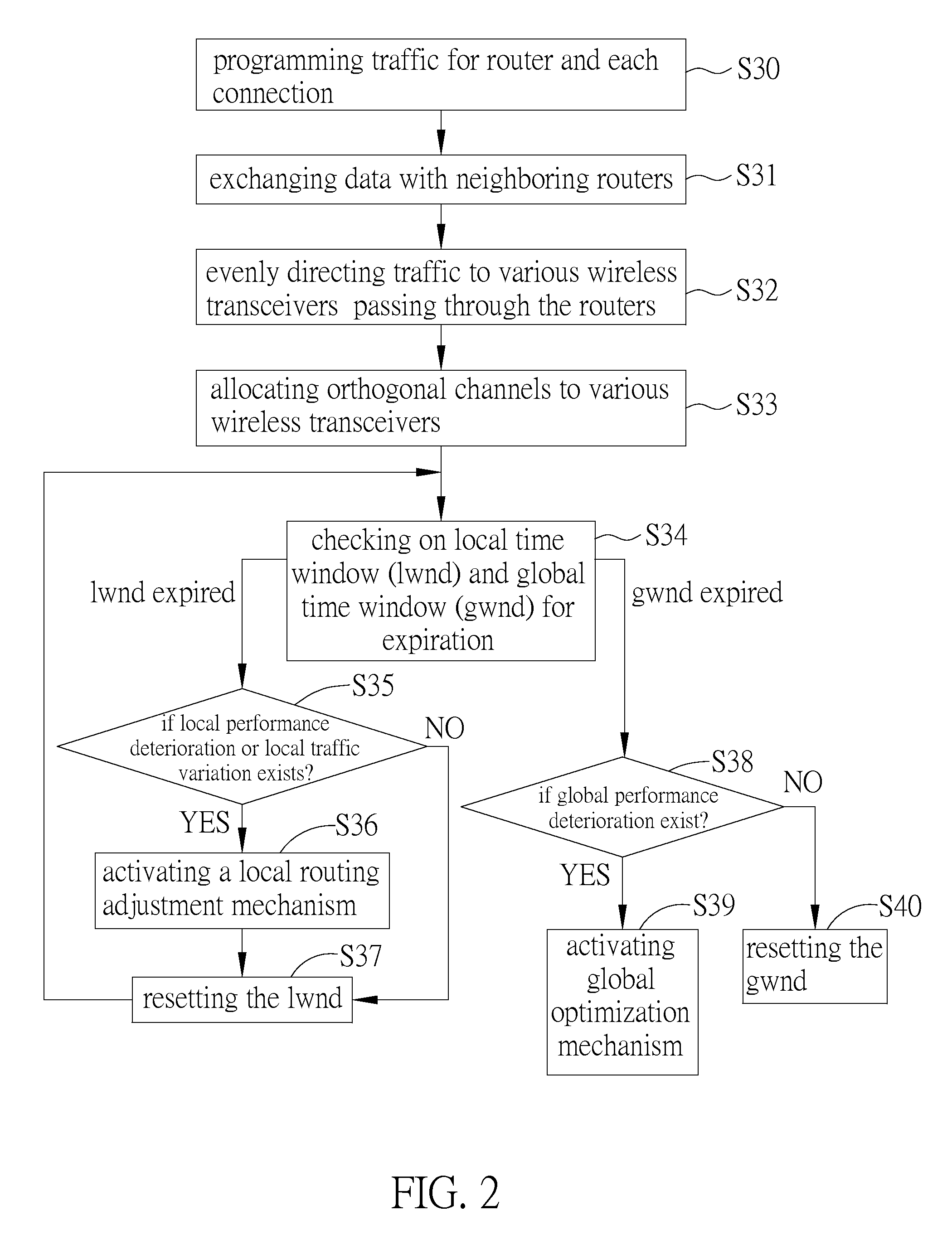Network resource allocation system and method of the same
a network resource allocation and network resource technology, applied in the field of network resource allocation system and method of same, can solve the problems of inability to quickly change transmission modes in correspondence to variables such as routing errors, interference with system performance, and surrounding variations, and achieves the effect of high overall transmission efficiency and impartiality
- Summary
- Abstract
- Description
- Claims
- Application Information
AI Technical Summary
Benefits of technology
Problems solved by technology
Method used
Image
Examples
Embodiment Construction
[0023]The following illustrative embodiments are provided to illustrate the disclosure of the present invention. Those in the art can readily understand these and other advantages and effects after reading the disclosure of this specification. The present invention can also be performed or applied in other differing embodiments. The details of the specification may be changed on the basis of different points and implementations, and numerous modifications and variations can be devised without departing from the spirit of the present invention.
[0024]Referring to FIG. 1, an architectural block diagram illustrating the network resource allocation system of the present invention is shown. The network resource allocation system of the present invention is applicable to a wireless mesh network. The wireless mesh network has channels, wireless transceivers, a central controller with a global time window, and routers with local time windows. The network resource system of the present invent...
PUM
 Login to View More
Login to View More Abstract
Description
Claims
Application Information
 Login to View More
Login to View More - R&D
- Intellectual Property
- Life Sciences
- Materials
- Tech Scout
- Unparalleled Data Quality
- Higher Quality Content
- 60% Fewer Hallucinations
Browse by: Latest US Patents, China's latest patents, Technical Efficacy Thesaurus, Application Domain, Technology Topic, Popular Technical Reports.
© 2025 PatSnap. All rights reserved.Legal|Privacy policy|Modern Slavery Act Transparency Statement|Sitemap|About US| Contact US: help@patsnap.com



